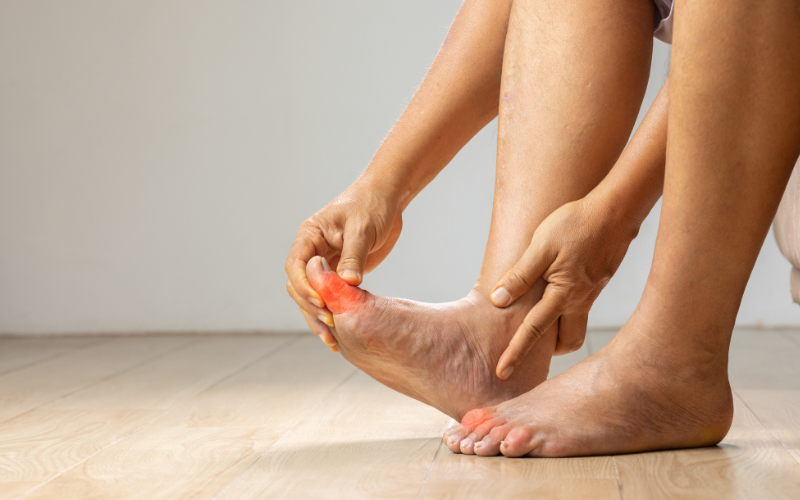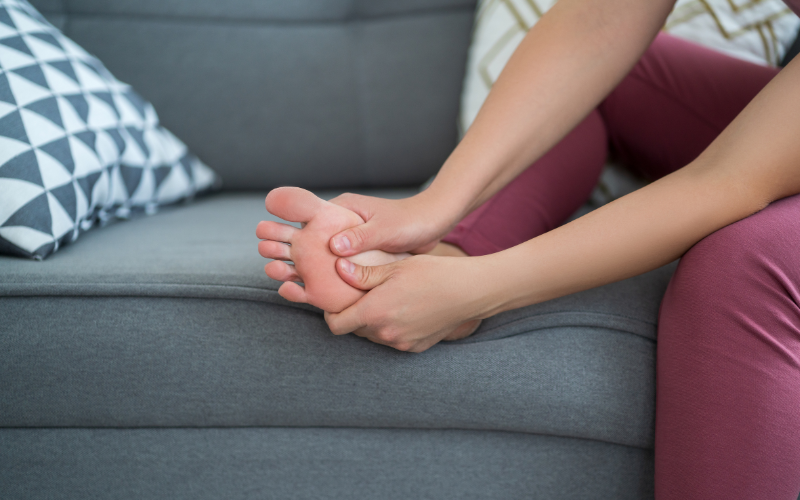Gout is a common form of arthritis that causes sudden, severe attacks of pain, swelling, and redness in the joints, particularly the big toe. It results from the accumulation of uric acid crystals in the joints, leading to inflammation. While managing gout primarily involves controlling uric acid levels through medication and dietary changes, exercise also plays a critical role in managing the condition. Engaging in regular physical activity can help reduce the frequency of gout attacks, improve joint function, and promote overall health. This article delves into the role of exercise in gout management and how it can help prevent flare-ups while enhancing quality of life for individuals living with this condition.
Understanding Gout and Its Impact on Health
Before exploring how exercise helps manage gout, it’s essential to understand what gout is and how it affects the body. Gout occurs when there is an excess of uric acid in the blood, a condition known as hyperuricemia. This excess uric acid forms crystals that settle in the joints, causing pain and inflammation. Gout often targets the big toe but can affect other joints such as the knees, wrists, and elbows.

Excess uric acid can be triggered by several factors, including poor diet (high in purines), obesity, alcohol consumption, and certain medical conditions like kidney disease or hypertension. While medication and dietary changes are key to controlling gout, exercise can support these efforts by enhancing circulation, reducing inflammation, and promoting overall joint health.
How Exercise Helps in Gout Management
Exercise can benefit individuals with gout in a variety of ways. Here are some key reasons why incorporating physical activity into your gout management plan is essential:
1. Weight Management and Reduced Uric Acid Levels
Being overweight or obese increases the risk of gout due to the added pressure on the joints and the higher production of uric acid. Excess weight can also impair the kidneys’ ability to remove uric acid efficiently, leading to its buildup in the bloodstream. By engaging in regular exercise, you can help achieve and maintain a healthy weight, which in turn reduces the risk of gout attacks.
Exercise also improves the function of the kidneys, enabling them to excrete uric acid more effectively. This helps prevent the formation of uric acid crystals and reduces the likelihood of painful flare-ups.
2. Reduced Inflammation and Pain Relief
Physical activity has been shown to have anti-inflammatory effects on the body. Regular exercise can help reduce inflammation in the joints by improving blood circulation and promoting the flow of synovial fluid. Synovial fluid is a natural lubricant that reduces friction in the joints and helps prevent damage from uric acid crystals.
In addition to its anti-inflammatory benefits, exercise can also help manage pain associated with gout. Light to moderate physical activity stimulates the release of endorphins, the body’s natural painkillers. This can provide temporary relief from the discomfort of gout, helping to improve mobility and joint function.
3. Improved Joint Flexibility and Mobility
One of the long-term effects of gout is joint stiffness and reduced mobility, which can make daily tasks more challenging. Exercise helps to improve joint flexibility by keeping the muscles and ligaments around the joints strong and flexible. Strengthening exercises can support the affected joints, providing better stability and reducing the risk of injury.
Low-impact exercises like swimming, cycling, and walking are excellent choices for people with gout, as they place less strain on the joints while improving overall strength and flexibility. These activities can help maintain joint mobility and prevent further deterioration caused by the buildup of uric acid crystals.
4. Better Blood Circulation
Good circulation is essential for maintaining healthy joints and preventing gout flare-ups. Regular physical activity helps improve blood flow to the joints, ensuring that nutrients and oxygen are delivered efficiently while waste products, including uric acid, are carried away. Enhanced circulation can also aid in the healing process after a gout attack, promoting faster recovery and reducing the severity of subsequent flare-ups.
5. Stress Reduction and Prevention of Gout Attacks
Stress is a common trigger for gout flare-ups, as it can cause the body to produce more uric acid. Exercise is an effective way to reduce stress and promote mental well-being. Physical activity stimulates the production of endorphins, which are known to elevate mood and reduce stress levels. By incorporating exercise into your routine, you can manage stress more effectively and potentially reduce the frequency of gout attacks.
Types of Exercise That Are Beneficial for Gout Sufferers
Not all types of exercise are suitable for individuals with gout. High-impact activities that put excessive stress on the joints, such as running or heavy weightlifting, should be avoided during a gout flare-up. Instead, low-impact exercises that promote joint health without exacerbating symptoms are ideal. Here are some of the best exercise options for gout sufferers:
1. Walking
Walking is one of the simplest and most accessible forms of exercise. It’s gentle on the joints and helps improve cardiovascular health, promote weight loss, and increase mobility. For people with gout, walking at a moderate pace for 20-30 minutes a day can help keep joints flexible and reduce inflammation.
2. Swimming
Swimming is an excellent full-body workout that’s easy on the joints. The buoyancy of the water reduces the impact on the joints, making it an ideal choice for people with gout. Swimming helps improve flexibility, build muscle strength, and boost cardiovascular health without putting undue pressure on the joints.
3. Cycling
Cycling, whether on a stationary bike or outdoors, is another low-impact exercise that provides a great cardiovascular workout. It strengthens the muscles around the joints, improves circulation, and helps manage weight. Cycling can be done at a moderate intensity to avoid overstressing the joints.
4. Yoga
Yoga is a gentle exercise that focuses on flexibility, strength, and balance. Many yoga poses can help improve joint mobility and reduce stiffness, which is particularly beneficial for gout sufferers. Additionally, yoga promotes relaxation and stress reduction, which can help lower the risk of gout attacks.
5. Stretching
Stretching exercises can improve joint flexibility and reduce muscle stiffness, which is important for maintaining mobility in people with gout. Incorporating a daily stretching routine can help prevent joint pain and discomfort and improve overall range of motion.
Precautions to Take When Exercising with Gout
While exercise is beneficial for gout management, it’s important to take certain precautions to avoid exacerbating symptoms:

- Avoid High-Impact Activities: As mentioned, high-impact exercises such as running or intense weightlifting can put unnecessary strain on the joints and trigger gout flare-ups. Stick to low-impact activities that are gentler on the joints.
- Listen to Your Body: If you experience pain or discomfort during exercise, it’s important to stop and rest. Pushing through pain can worsen symptoms and increase the risk of injury.
- Consult Your Doctor: Before starting any exercise program, it’s important to consult with your healthcare provider, especially if you have other medical conditions that may affect your ability to exercise.
- Stay Hydrated: Staying well-hydrated is crucial when managing gout. Drink plenty of water before, during, and after exercise to help flush out excess uric acid and prevent dehydration.
Conclusion: Exercise as a Key Component of Gout Management
Exercise plays a crucial role in managing gout and preventing flare-ups. By helping with weight management, reducing inflammation, improving joint flexibility, and promoting better circulation, regular physical activity can greatly improve the quality of life for individuals living with gout. Incorporating low-impact exercises such as walking, swimming, and cycling into your routine can provide long-term benefits, while also reducing the risk of future gout attacks. However, it’s important to consult your healthcare provider before starting any new exercise program, especially if you’re dealing with active symptoms or other health conditions. With the right approach, exercise can become an essential part of your gout management strategy, helping you lead a healthier, more active life.

Leave a Reply